Personal landmark: my 1000th post
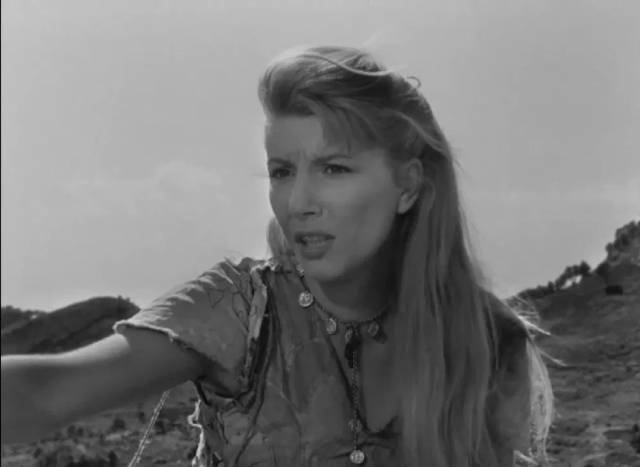
As this is the one-thousandth post since I started this blog in October 2010, it’s perhaps time once again for a little introspection. As someone who’s never much liked working for a living, I’d assumed the transition to permanent idleness when I retired six months ago would be smooth and easy. To some degree, it has been; no longer any need to force myself to get going in the morning and drag my ass to the office. I can go for walks, take afternoon naps, go for coffee with a friend … free to do whatever I feel like in my own time.
What I’d really expected, though, was to do more writing now that I had the time, with vague plans to systematically tackle the backlog in my disk library. I would devote a week to Arrow’s Coffin Joe set, another to Eureka’s Feuillade collection, finally get down to that Jacques Rivette set and, well, a whole bunch of other time-consuming sets – Kijû Yoshida, Shohei Imamura, the Taviani Brothers, Mondo Macabro’s Bollywood Horror Collection, Kieslowski’s Decalogue, Criterion’s Melvin Van Peebles’ set … and on and on. With nothing but free time, I could get serious about my film-watching…
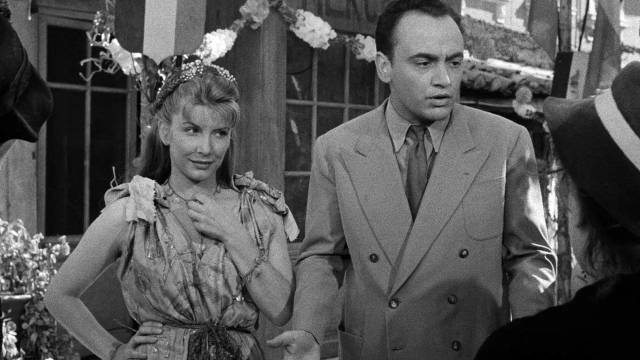
What I didn’t expect was that my writing would become more difficult. After fourteen years during which this blog served as a release from the tedium of work in which I had no personal investment, I suddenly didn’t have anything to escape from and the writing began to feel like a chore. I’d been used to producing my posts in a single concentrated session every Sunday, needing to get it done before returning to work the next day. (For years, I’d take my laptop down the street to the Neighbourhood Bookstore & Cafe, where I’d sit at a table by the window, drinking coffee, having soup and a sandwich for lunch as I typed, walking home with a completed draft ready to format and schedule; when the Neighbourhood closed its doors, it took a while to adjust to a new routine as I had to do my writing at home.)
With no job to go to, two things immediately changed; not only did the writing no longer serve as a happy diversion from an externally imposed routine, it also no longer had to be accomplished in a fairly narrow window every weekend. I could write anytime. Where before I had to get it done, now I can do it whenever I feel like it … which means it’s far too easy to put it off. I can linger over coffee, browse the New York Times on-line, catch up on Colbert and Seth Meyers clips on YouTube, play some solitaire … and then it’s getting on for lunchtime and it seems to be too late to get started on anything today … but that isn’t a big problem because I can just get to it tomorrow…
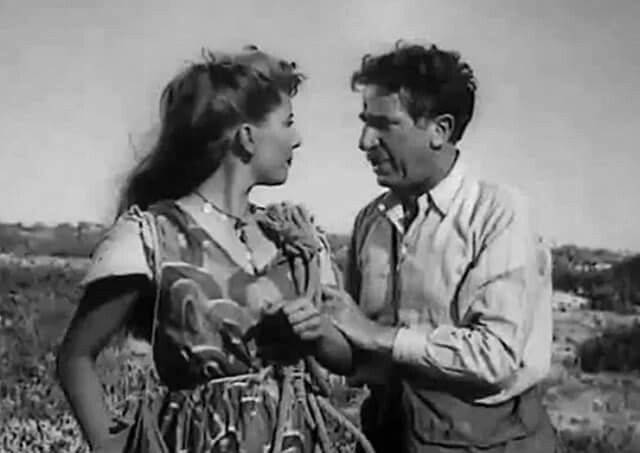
Without an external structure to organize my time, it turns out I don’t have the internal discipline to do what I had assumed I really wanted to do – which isn’t actually a big surprise as I’ve had a life-long tendency to procrastinate. I have managed to maintain my posting schedule (every Wednesday for fourteen-and-a-half years, with occasional additional posts on a Saturday – an average of one post every 5.4 days since October 22, 2010, with no pauses for two heart attacks and rotator cuff surgery, which I guess is some kind of accomplishment![1]), so none of my “struggles” are apparent to anyone else. It’s an internal conflict which prompts me to ask myself whether I actually want to continue with the blog. Although I do get some positive feedback, the writing has always been more for myself than for any imagined audience, a way of aiding my own memory to retain all those movies as well as a way of justifying to myself the investment of time and energy I’ve put into a lifetime of watching movies. Is there any larger point? And does it matter whether there is or not? What else should I be doing with my time? Maybe a thousand posts are enough…
I’m certainly still watching a lot of movies, and I’m still subject to a nagging feeling that I should have been writing about many more than those I’ve made the time for. But that’s a feeling I’ve had quite consistently since I took up this hobby; I’ve always managed to keep going in the past because I knew that my writing was off-setting the tedium of a boring day-job, but now that counter pressure has suddenly disappeared, I can’t help thinking there may be better things to do with my time, even if it’s just getting out for long walks on sunny days … and perhaps even other kinds of writing. It’s years since I tried my hand at fiction and part of me wonders whether I can still do that (although I never had anything published, I think a few of my short stories weren’t bad, and even a couple of my eight or so novels were at least promising). I suspect that if I take a break, chances are I won’t ever get back to writing these reviews, so as long as I’m unable to make an actual decision I feel trapped, forced to continue in case I might regret stopping. After all these years, I’ve kind of written myself into a corner.
So for now I’ll carry on and mention something I watched a couple of months ago and really did mean to write about…
*

Manon des Sources (Marcel Pagnol, 1952)
After watching Claude Berri’s Jean de Florette and Manon des Sources (1986) back in April and learning something of the films’ background – based on a novel by Marcel Pagnol which in turn was a literary extrapolation from a film written and directed by Pagnol in 1952 – I immediately went in search of the original and discovered that it had been restored and released in France as a two-disk Blu-ray set. It wasn’t cheap, but I ordered a copy and had it a couple of weeks later (the Internet and on-line shopping can be a wonderful thing).
I haven’t read any of Pagnol’s novels or plays, so my knowledge of his work comes entirely from Yves Robert’s diptych based on Pagnol’s autobiographical books My Mother’s Castle and My Father’s Glory (1990) and Criterion’s editions of The Marseilles Trilogy (1931-36), The Baker’s Wife (1938), and Berri’s two part adaptation of the 1963 novel L’Eau des collines. (I also have the BFI Blu-ray of Peter Sellers’ Mr. Topaze [1961], but haven’t got around to watching it.) Although this exposure is limited considering the volume of work he produced from the mid-’20s to his death in 1974, certain things seem clear, not least his deep affection for the people and landscape of Provence – his characters, flawed in very human ways, include peasants and small landowners from the countryside and members of the small business class in the towns. While these lives are tainted by petty conflicts, Pagnol unfailingly sketches them with a deep sympathy.
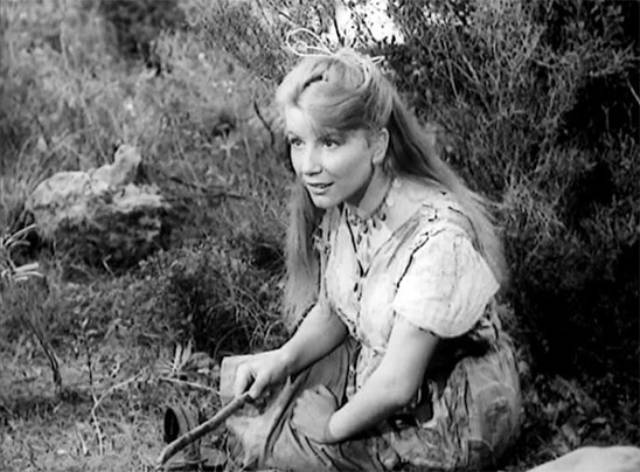
While the narrative is familiar to anyone who has seen Berri’s diptych, there are notable differences in Pagnol’s “first draft”. Like Berri’s film, Pagnol’s consists of two parts running more than three-and-a-half hours, but here the focus is entirely on Manon, with the story of her childhood and what happened to her father (the entirety of Berri’s Jean de Florette) gradually revealed through conversations and the effect Manon (Jacqueline Pagnol, the filmmaker’s wife, for whom he wrote the script) has on the community. This gives the film a more leisurely pace which permits Pagnol to create a deeper sense of the community and the lasting effects of the crime which hangs over the village.
Pagnol’s background as a playwright seems most evident in a series of sequences in which large numbers of characters interact and draw crucial details from one another, beginning with a group of men sitting at a table outside the village cafe, each sketched in as a distinct individual, although all are clearly members of a long-established social group with the exception of the school teacher (Raymond Pellegrin), who serves as the audience’s surrogate to whom the village history is revealed, and the comically eccentric seasonal visitor M. Belloiseau (Robert Vattier), who carries a large, seemingly home-made device to aid his failing hearing and is the butt of good-natured mockery from the group.
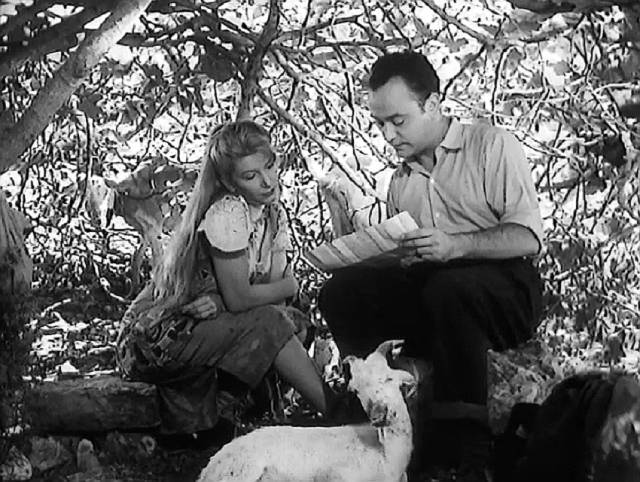
It’s during this first conversation that we hear about the wild child Manon, who lives in the hills with her small herd of goats, and whom local superstition deems to be a witch. Everyone is waiting for her to be brought in by the police for having assaulted a young man. At an impromptu hearing in front of the mayor, the teacher assumes the role of defence counsellor, skilfully demolishing the absurd accusations of (mostly) the village women who see Manon’s wildness as a social threat. After getting her off, the teacher delves into her story, becoming the catalyst for bringing to light the village’s guilty secrets and the inevitable end of a tragedy which has remained unresolved for many years.
This, as is spelled out dramatically in the first half of Berri’s adaptation, involves the greed of local landowner Le Papet (Henri Poupon) and his nephew Ugolin (Rellys), who want the land inherited by Manon’s father and, to defeat Jean’s plans to settle here and farm, block the spring which is essential to make the property fertile. Jean died in defeat, his wife went mad, and young Manon became virtually feral. Everyone in the village was to some degree complicit, because they all knew about the spring but no one informed Jean – because “it wasn’t our business”. After Jean’s death, Le Papet and Ugolin took over his land, unblocked the spring, and Ugolin built a successful business growing flowers and vegetables. His guilt makes him encourage Manon to “steal” from his garden … and it also ironically has made him fixate on her romantically; he pursues her in the hills, declaring his love and his desire to marry her, tormented by her rejection. He naively believes he can make things right by providing her with a comfortable life, while she sees him as her father’s murderer and wants revenge.
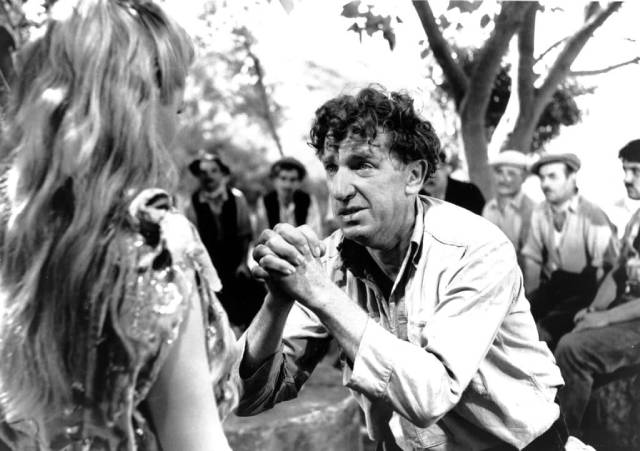
That revenge comes in the form of her repeating Ugolin’s original sin, but extending the consequences to the entire village when she accidentally discovers the source of the underground spring which supplies the entire valley with water, and seals it up. The effect of the ensuing drought is disastrous and the stress finally brings the story of what Le Papet and Ugolin did into the open, with other villagers acknowledging at last their own part in Jean’s tragic fate. While Le Papet remains defiant, Ugolin publicly declares his love for Manon and, publicly rejected, commits suicide.
While Pagnol’s drama is firmly rooted in this specific time and place, it draws on classical tragedy and the sense that human actions carry with them the inevitability of a fate which can’t be escaped. As good as Berri’s adaptation is, Pagnol’s original has a richness and depth which is transcendent, bolstered by a large cast of character actors who inhabit the film’s world in a way which convinces us that they have all been here long before this particular story is being told and will continue long after these particular events have receded into memory. But it’s Jacqueline Pagnol and Rellys who give the film its emotional resonance in a pair of superb performances which raise the story to the level of classical tragedy.
It seems strange that Manon des Sources isn’t better known, but I’m grateful to CMF-MPC, a company dedicated to preserving Pagnol’s films which is run by his grandson, for not only releasing this masterpiece on Blu-ray in an excellent restoration, but also making it more widely accessible with the inclusion of English subtitles (not always the case with French releases).
_________________________________
(1.) Although not intentional, the blog became something of a substitute for my career as an editor, which had dried up around the time this website was created. After fifteen years, much of which was taken up with projects at the National Film Board, with occasional side gigs with small commercial companies, I had suddenly found myself with little work when the local NFB office imploded after years of contentious internal political conflicts. I had become too complacent and hadn’t established strong connections in Winnipeg’s larger filmmaking community, so finding work became increasingly difficult, only occasionally getting short-term jobs when producers were having difficulty because their usual editors were tied up on other projects. That was how I ended up working for six weeks in Paris in 2010 on the rather embarrassingly bad Milla Jovovich movie Faces in the Crowd. I briefly filled the gaps by producing and directing a pair of long-form documentaries – Going: Remembering Winnipeg Movie Theatres (2013) and Carfree: Stories from the Non-Driving Life (2014) – before landing a well-paying job with the federal government, which supported me to retirement at the end of 2024. Although I occasionally did a few small projects for friends, this website quickly became my chief creative outlet. The question now is whether it has outlived its purpose? (return)
Comments
Hi George. To me, I find your blog to be a valuable resource, which I access often. I’ve learned about so many good films (many I can’t find, but I’ll keep looking). I always look forward to reading the latest blog entry. In terms of continuing your blog now that you’re retired, I understand the feeling. In the 1990s, I had a prime-time music radio show for five years on 91.1 FM (community radio, so it was volunteer). It was a lot of fun, and I played music that wasn’t heard on the radio at that time, but when it became more of a chore and wasn’t as much fun, I had difficulty being enthusiastic. After much debate, I quit. So even if I wish you’d continue your blog, I totally understand if you decide to stop. You can look back at a remarkable legacy for those with your same passion in film to indulge!
Thanks for the pep talk, Paul. Paradoxically, I don’t think I have the willpower to stop – at least, not yet. The blog really has its claws in me!
Your reviews are the only ones that I read. They are full of great background information and your interpretation of films are extremely interesting to me. I will miss your reviews when you call it quits..,.
Thanks! For now, I’m still at it!